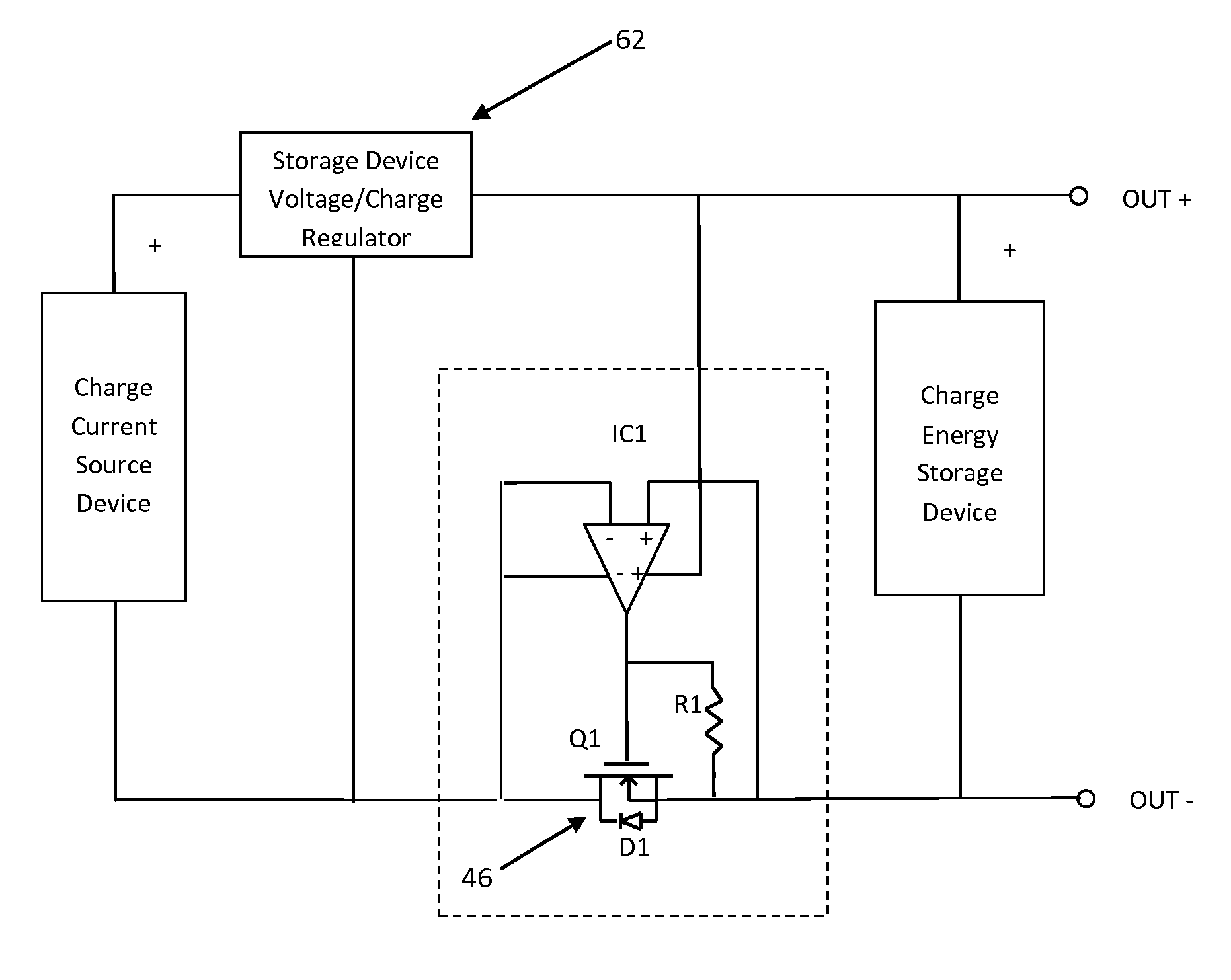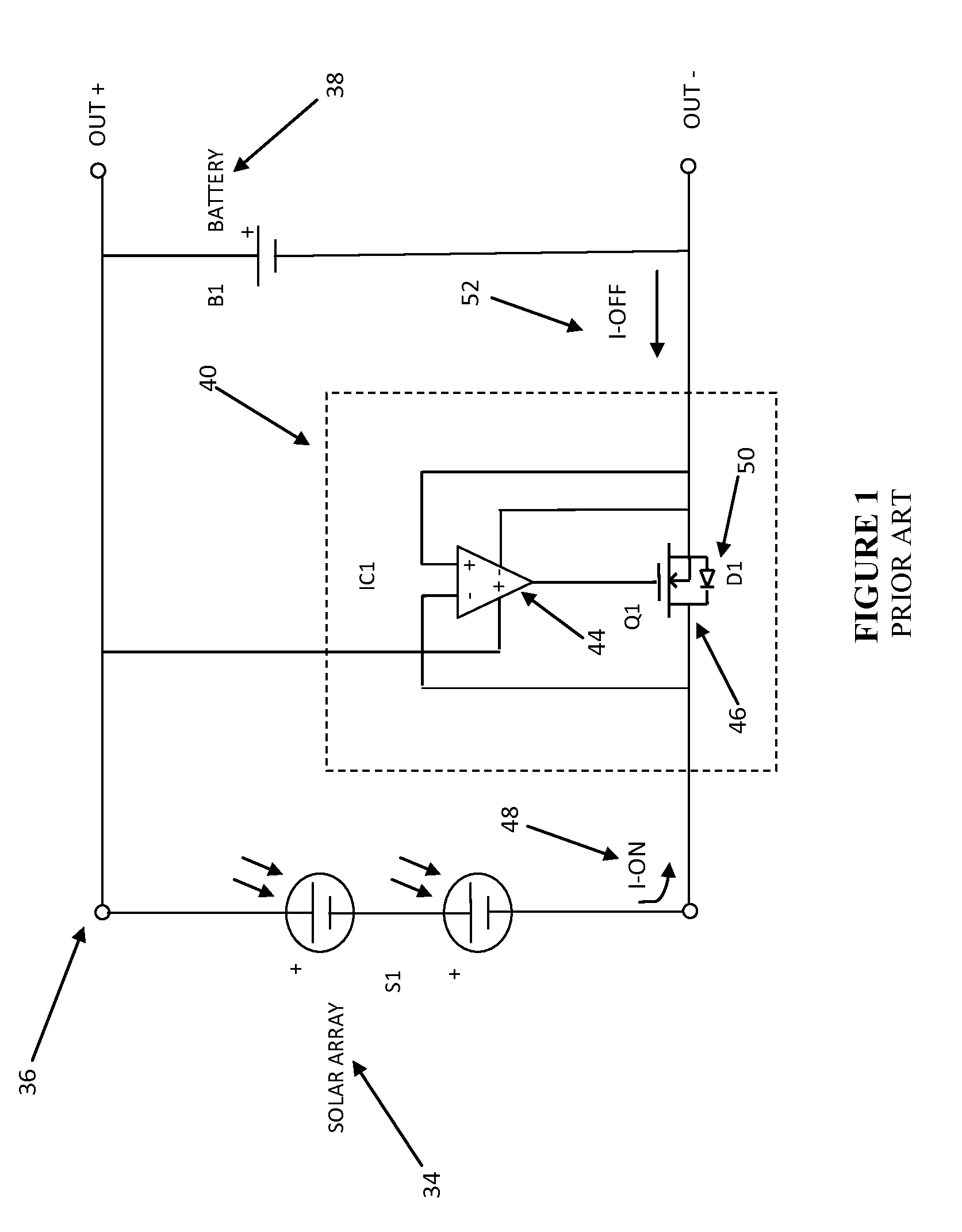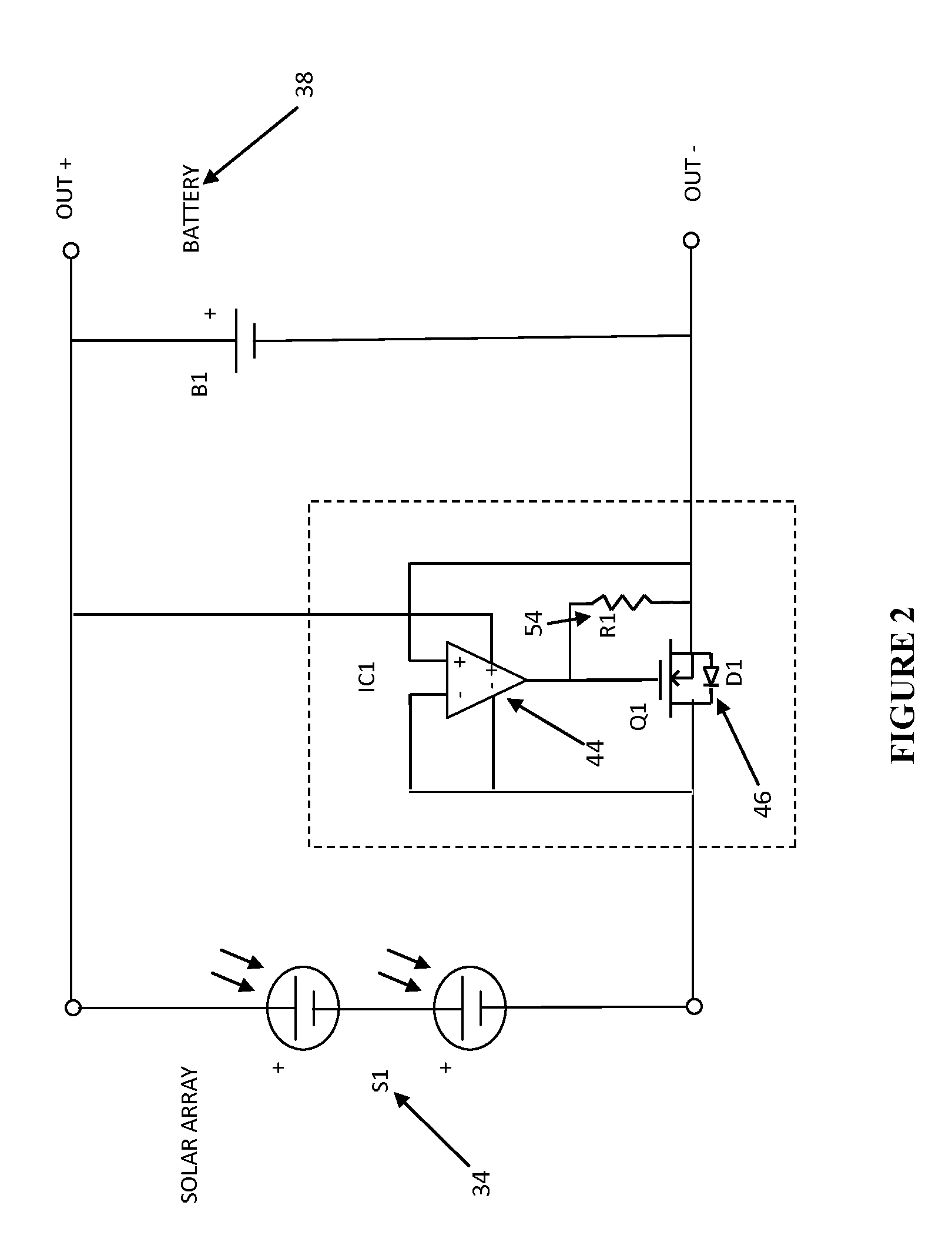Ideal diode
a diode and diode technology, applied in the direction of d transporting and packaging, ac network circuit arrangement, etc., can solve the problem of not being desirable in micro solar charging system
- Summary
- Abstract
- Description
- Claims
- Application Information
AI Technical Summary
Benefits of technology
Problems solved by technology
Method used
Image
Examples
Embodiment Construction
[0011]Referring to FIG. 1 there is shown a prior art circuit diagram 36 of an intermittent current limited power source such as a solar array S1 34 connected to a device for storing charge such as a battery B1 38 through an active switch circuit 40. The active switch circuit 40 substantially reduces the power that is lost by conventional reverse current diodes normally associated with solar charging devices. Referring once again to FIG. 1, the active switch circuit 40 consists of a reverse current detector IC1 44 and a low loss N-channel enhancement mode MOSFET switch Q1 46 having an internal diode D150. In operation, incident solar energy generated by solar array S1 34 causes a counter clockwise current flow to occur as shown by “I-on”48 in FIG. 1. The solar array 34 electromotive force (EMF) forward biases D150 and current begins to flow. The reverse current detector IC1 44, which in this embodiment is shown as a differential amplifier detects the positive difference voltage acros...
PUM
 Login to View More
Login to View More Abstract
Description
Claims
Application Information
 Login to View More
Login to View More - R&D
- Intellectual Property
- Life Sciences
- Materials
- Tech Scout
- Unparalleled Data Quality
- Higher Quality Content
- 60% Fewer Hallucinations
Browse by: Latest US Patents, China's latest patents, Technical Efficacy Thesaurus, Application Domain, Technology Topic, Popular Technical Reports.
© 2025 PatSnap. All rights reserved.Legal|Privacy policy|Modern Slavery Act Transparency Statement|Sitemap|About US| Contact US: help@patsnap.com



